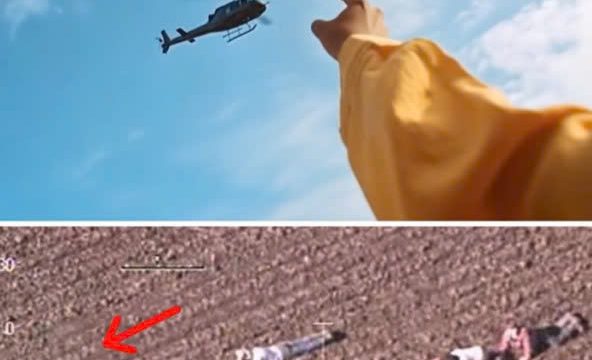On May 10 and 11, 1996, Mount Everest, the highest point on Earth, became the site of one of the most devastating disasters in the history of climbing when a powerful blizzard swept across the upper slopes, trapping dozens of climbers in the Death Zone and ultimately claiming the lives of eight people while scarring many others with physical and emotional trauma.

The tragedy was later chronicled in Jon Krakauer’s bestselling book Into Thin Air and retold in the 2015 movie Everest, both of which highlighted not only the terrifying events of those two days but also the larger debate about the risks of commercial expeditions on the world’s most dangerous peak. Everest, standing at 29,029 feet, has always lured adventurers seeking to test themselves against its unforgiving conditions, but by the mid-1990s, guiding companies such as Adventure Consultants, led by Rob Hall, and Mountain Madness, led by Scott Fischer, had begun leading paying clients of varying skill levels to the summit. That spring, 33 climbers set out from Camp IV at nearly 26,000 feet, planning to reach the top by early afternoon on May 10 before turning back down to safety. But mistakes began early and snowballed into catastrophe.
Fixed ropes that should have been placed in advance, especially at the Hillary Step just below the summit, were not ready, forcing climbers to wait dangerously long in the thin air. Many exhausted their oxygen supplies as they queued in the freezing cold, and by the time they finally reached the summit, it was hours later than planned, well past the safe turnaround time of 2:00 p.m. Some climbers did not stand on the top until after 5:00 p.m., leaving them extremely vulnerable when the weather turned. Around 5:30 p.m., a violent storm roared over the mountain, whipping the slopes with subzero temperatures, hurricane-force winds, and blinding snow.
The ropes that guided climbers back to camp were buried, visibility fell to almost nothing, and dozens of mountaineers found themselves trapped in the Death Zone with no clear way down. Among the dead were Rob Hall, who refused to abandon his client Doug Hansen near the South Summit, staying with him even as both succumbed to the cold. Hall managed a final radio call to his pregnant wife in New Zealand, whispering the words, “Sleep well, my sweetheart. Please don’t worry too much,” before dying on the mountain. Hansen, who had failed to summit the year before and was determined to succeed this time, collapsed near the Hillary Step and was never found.
Guide Andy Harris, who tried to carry oxygen to Hall and Hansen, also disappeared in the storm, his body never recovered. Mountain Madness leader Scott Fischer, suffering from altitude sickness and exhaustion, collapsed near a spot known as the Balcony at 27,500 feet and was found frozen the next day. Yasuko Namba, a Japanese climber who had become the oldest woman to summit Everest at the time, collapsed on the South Col from exhaustion and hypothermia; her body was retrieved a year later. Three climbers from the Indo-Tibetan Border Police also perished on the Northeast Ridge, their deaths receiving less international attention but adding to the staggering toll.
In the chaos, some climbers managed to survive against staggering odds. Beck Weathers, a doctor from Texas who had gone blind due to altitude-induced damage, was left for dead twice in the snow but somehow stumbled back to Camp IV with horrific frostbite. He later described how thoughts of his family kept him alive and recounted his ordeal in his memoir Left for Dead. Jon Krakauer, climbing as a journalist for Outside magazine, made it back to camp but later expressed deep regret for joining the expedition at all, calling it the worst decision of his life. Guide Anatoli Boukreev of Mountain Madness, who had earlier descended ahead of his clients, later went back into the storm repeatedly, pulling Sandy Hill, Charlotte Fox, and Tim Madsen to safety, though he was criticized by some for his earlier choices.
Sherpas also played crucial roles in guiding survivors down, with Lopsang Jangbu among the most notable, though tragically he too died later that year on another climb. The aftermath of the disaster ignited fierce debates within the climbing community. Krakauer’s Into Thin Air placed blame on poor decisions and questioned Boukreev’s tactics, while Boukreev defended himself in The Climb, co-written with G. Weston DeWalt. Other survivors wrote their own accounts, offering varied perspectives that ensured the 1996 tragedy would be analyzed from every angle. Popular belief has long suggested overcrowding caused the deaths, but in truth only 29 climbers were near the summit that day, far fewer than the hundreds who would crowd the mountain in later years.
Instead, it was the deadly combination of poor preparation, delays, insufficient oxygen, and the storm’s fury that turned a routine summit attempt into catastrophe. In the years since, the disaster has become a defining moment in mountaineering history, a reminder of both the dangers of commercialization and the unrelenting force of nature. For the families of those who perished, the pain endures, and for the survivors, the physical scars and memories of those two days never faded. Yet despite the warnings, Everest continues to draw climbers from around the globe, its allure seemingly greater than the fear it inspires, proving that the thin line between triumph and tragedy in the Death Zone is one that adventurers are still willing to cross.





